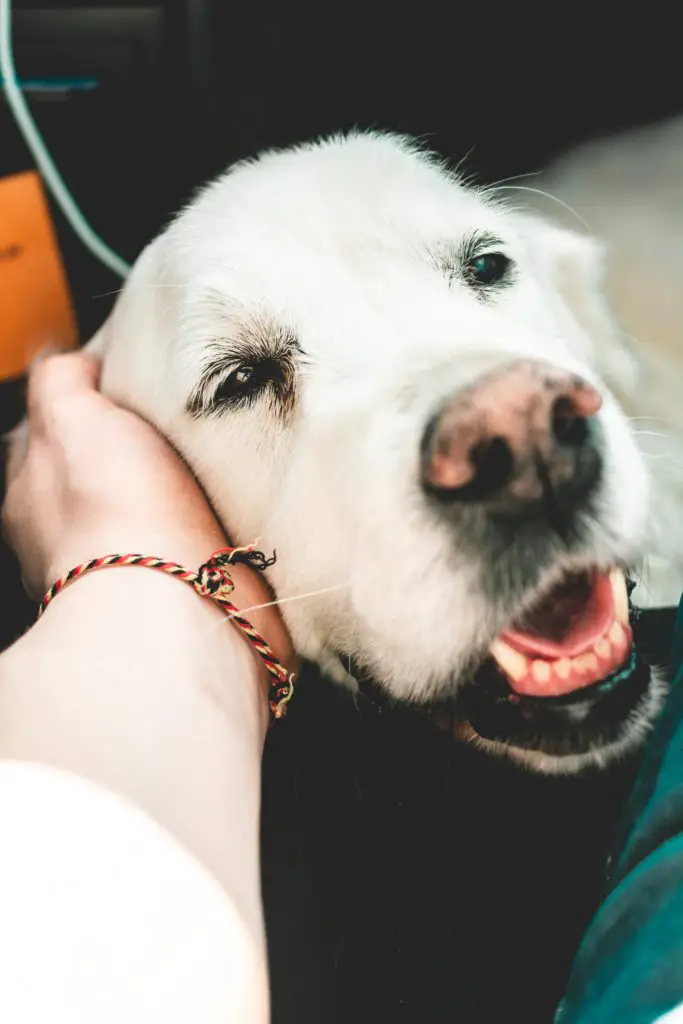Can Dogs and Reptiles Live Together many will ask?
If you are a dog owner eager to welcome a scaly friend for your furry companion, be sure that with patience and a few helpful tricks this unlikely duo has great potential to be friends.
Animal best friends are the most wholesome things ever. However, reptiles and dogs aren’t the first pair that you think of when it comes to a pair of best friends.
Pets are a source of joy for any owner and often lifetime friends. So as owners, we should try our best to ensure all our furry and scaly friends live in harmony.
This is why we will discuss how to overcome the hurdles and give tips on helping dogs and reptiles co-exist together.
Can Dogs and Reptiles Live Together?

Despite being completely different species, dogs and reptiles have the potential to get along well and be great friends.
Given ample time and effort, you can slowly accustom your dog to its cold-blooded housemate. Contrary to their appearance, reptiles are likely to be scared of you and big animals like your dog.
Furthermore, given the curious nature of dogs, they are likely to sniff and prod or even bark around the reptile which may scare them further.
So, you need to take careful measures to acclimatize both your reptile and dog to allow their cohabitation.
Types of Reptiles

The type of reptile may influence its interaction with your furry companion.
For instance, iguanas are known to be moderately aggressive so if you have a particularly inquisitive dog, it may be best to not get an iguana.
On the other hand, tortoises and turtles are great choices as they require little upkeep and are generally friendly.
You can also safely let tortoises roam around freely as they will retreat into their shell in case of feeling threatened. Turtles will likely be kept in water tanks which will also keep them safe.
However, if you have a taste for more non-conventional reptiles like snakes, lizards, or crocodiles, then it is best to keep them in a large enclosure.
Best Reptiles to Keep around Dogs

Besides tortoises and turtles, some lizards make great pets for dog owners – especially for beginners.
1. Bearded Dragons
The calm nature and sociability of bearded dragons make them a great choice for beginners.
To introduce your lizard, slowly approach your dragon and support the body with your hand while resting its tail on your upper arm.
Loosely leash your dog and let him sniff the lizard, encouraging by petting him.
2. Leopard Geckos
Leopard geckos are affectionate, docile lizards that make them great friends for both you and your dog.
For the first interaction, hold your gecko on a flat palm supporting the feet and tail. Similarly, encourage your dog as mentioned above earlier.
3. Blue-tongued Skinks
Although less social than other lizards mentioned above, these docile creatures are easily tamed.
Introduce them to your dog in a similar way already described, however, try to keep interactions short and only after the skink is comfortable around you.
Pay attention to both your scaly and furry friend during the interaction.
If your dog is growling or your lizard is squirming or showing signs of stress (hissing, puffing out its body, sticking its tongue out), cut short the interaction and try again later.
Types of Dogs You Can Keep Around Reptiles

Your dog’s temperament is another factor that will influence their response to reptiles. An anxious, panicky dog is more likely to scare off your reptile.
It’s best to avoid Labrador Retrievers, Australian Shepherds, Bichon Frise, Border Collies, King Charles Spaniels, and Cocker Spaniels as they fall into this category.
On the other hand, a great option to have, especially if you have a large family, is a Goldendoodle which is a mix between a golden retriever and a poodle.
These lovely dogs are easily trained and adaptable to changes, making them likely receptive to a reptilian companion.
Moreover, their coat is non-shedding which is a win-win situation if there are any allergic household members.
Teach Your Dog Basic Commands
Ideally commands like “stay”, “sit”, “quiet”, and “leave it” are the basic commands that your dog should be able to follow.
Teach and ensure that the dog can follow these commands even when distracted. This will help protect both your pets if your dog lunges at the tank or your reptile is walking outside its enclosure.
Observe Your Dog’s Behaviour
You are the best one to judge your dog and will be more likely to pick up on any signs of aggression. Observe how your dog responds in the presence of smaller animals.
Knowing whether your dog listens to your commands or is territorial is important before you introduce them to your reptilian pet.
Keep a Dog-free Room For Your Reptile
Try to set up the reptile enclosure in a place free from your dog. Always keeping them close may aggravate the dog and make the reptile squeamish.
It is preferable to select a room that your dog doesn’t visit often and place the enclosure on a table that the dog can’t reach. A room with a door to keep the animals separate is a wise choice.
How to Introduce Your Dog and Reptile
Dogs are aware when a new animal enters the house so you must introduce them well to avoid stressing both of them.
Positive interaction of your dog with other small animals is an essential prerequisite before introducing it to a reptile.
A dog that comfortably interacts with chickens, other small dogs, or even children is likely to respond positively to reptiles.
Make sure you bring both your pets to the vet and get your reptile checked for diseases or parasites. Finally, always wash your hands before handling your reptile.
Now before the two interact, ensure your dog is leashed or has a training collar on. Allow your dog to sniff around the enclosure, if he ignores the lizard afterward, consider it a good sign.
Reward your dog treats so that they know that calm behavior is ideal. However, if your dog is barking or whining, reprimand it and remove your dog from the room.
Try again at a later time. However, if this behavior occurs repeatedly, it might be a sign that a friendship is unlikely.
Watch Them Interact
Watching how they interact is crucial especially during the initial stages. As dogs are large animals, it is likely they may try to ‘play’ with the reptile but end up hurting the animal.
There is also the risk of breaking the cage so leash your dog if they become too enthusiastic. Additionally, always discourage licking the reptile.
Here are some body languages to look out for and discourage your dog about:
- Barking
- Whining
- Licking
- Nudging
- Stalking
- Crouching
- Chasing
You want to give both pets an environment where they can feel comfortable and secure. This is the best chance of avoiding any tragic accidents.
FAQs
As reptiles are conventionally unusual pets, it is natural to have many questions regarding their upkeep. Here we try to answer a few of them.
Can My Reptile Freely Move Around?
Lizards like bearded dragons love taking walks around and interacting with people.
Though it is perfectly fine to let your lizard walk around, ensure that they are supervised to avoid your dog from licking or biting them.
Remember to command your dog to stop if it shows any of these signs and picks up your lizard.
Will My Dog Eat My Reptile?
Unfortunately, there are stories of dogs eating and getting sick after consuming a lizard. This may occur because of their instinct to eat small animals.
It is important to accustom your dog to your reptile early on and discourage proximity to it. It’s a good idea to always supervise any interactions.
If the dog eats your lizard, observe for signs of poisoning as lizards carry several bacteria namely salmonella which is harmful to both dogs and humans.
If your dog shows signs of diarrhea, vomiting, or is sluggish after eating a lizard, immediately consult your vet.
What Cautions Should I Take?
Most precautionary measures have already been mentioned in the article. Here is a refresher with some added tips you should follow:
- Always supervise any interactions.
- Sanitize everything the lizard has touched and refrain your dog from coming near such surfaces.
- In the case of tortoises or turtles, be on the lookout for flipping on their back as they may be unable to get back up.
- Keep venomous snakes in enclosed tanks.
- Reptiles can bite your dog so keep them in their cage if you aren’t around.
- Install cameras to watch your pets if you are unable to stay with them.
Read Also: Can Dogs Eat Mackerel
Bottom Line: Why Dogs and Reptiles Can be Great Friends
Dog and reptile friendships are relatively uncommon but not unheard of. However, the process requires patience and time from both the owner and pets.
Dogs are the easiest pets to train so this makes them ideal for reptile companions. Moreover, reptiles are also calm animals and are unlikely to react unless the dog is aggressive.
These factors combined with positive reinforcement can lead to a great friendship or at least co-exist peacefully.
If either of your pets is aggressive, keep them apart and out of reach from each other and never leave them alone together.
A stepwise approach to introducing your dog to your reptile supervised play dates, and proper training can result in blossoming friendship between these two different creatures.
Be ready to capture some adorable moments on camera!
Read Next: Are Boxers Good With Kids